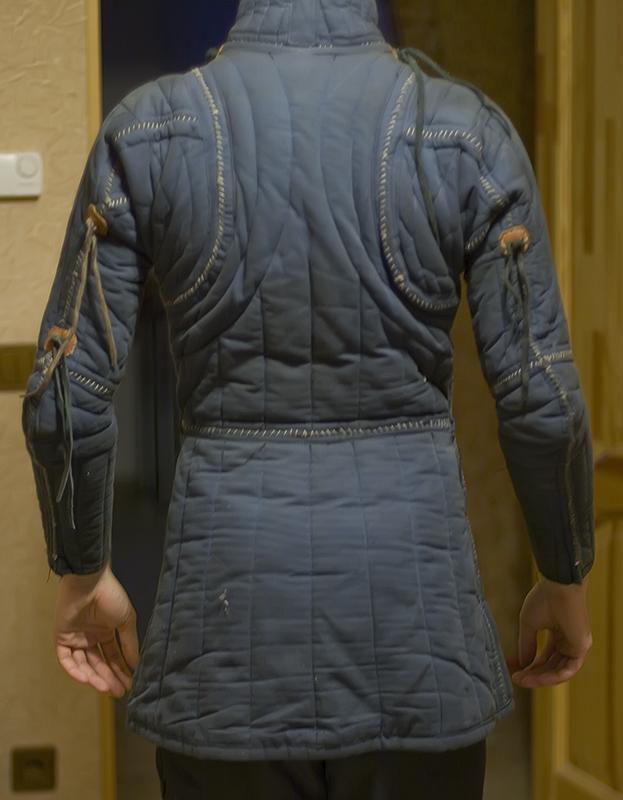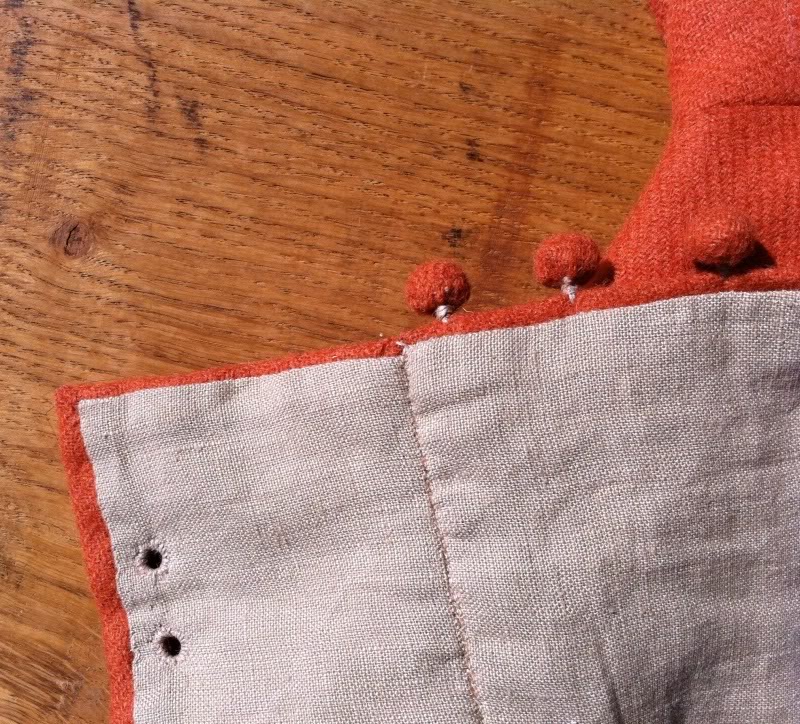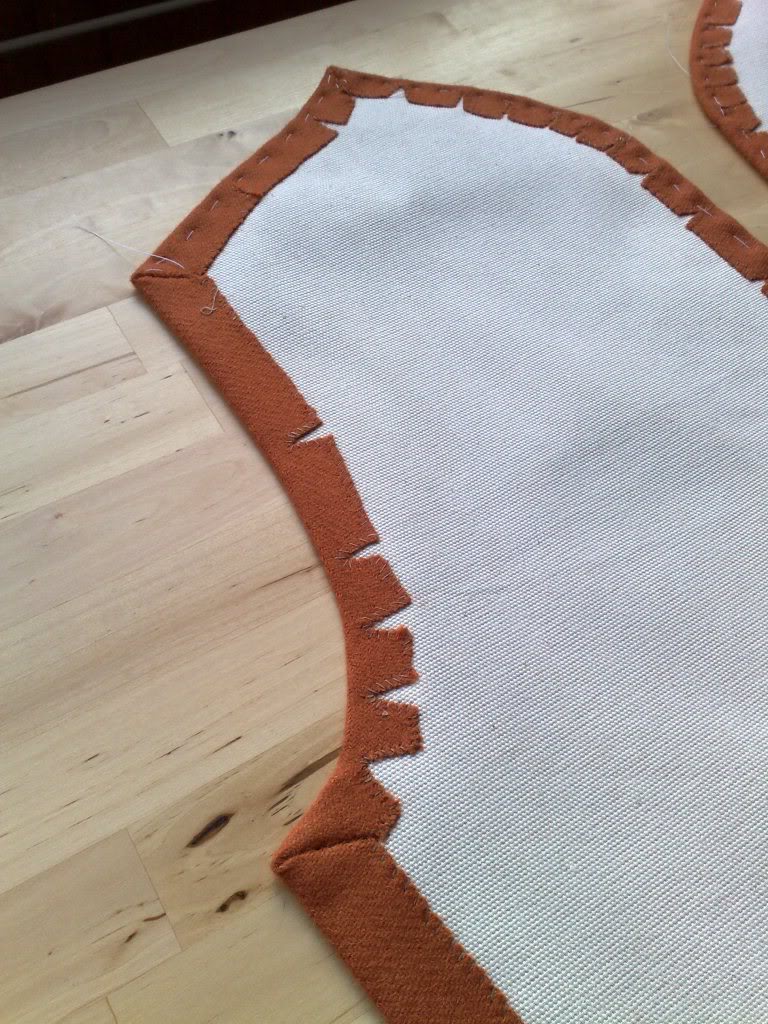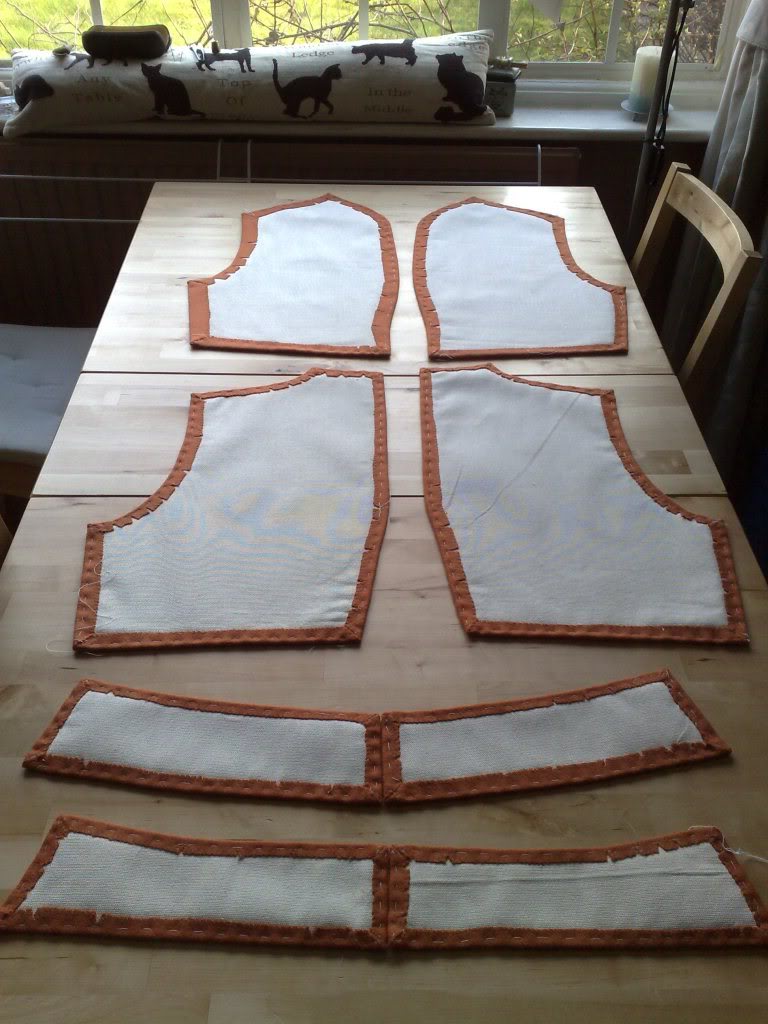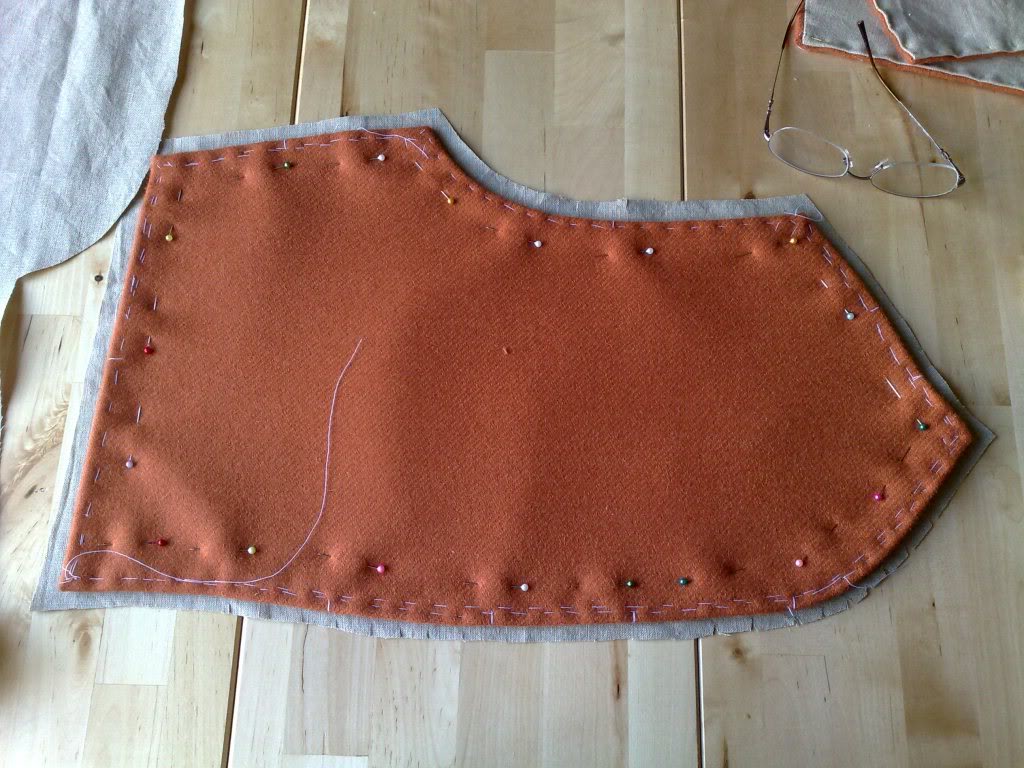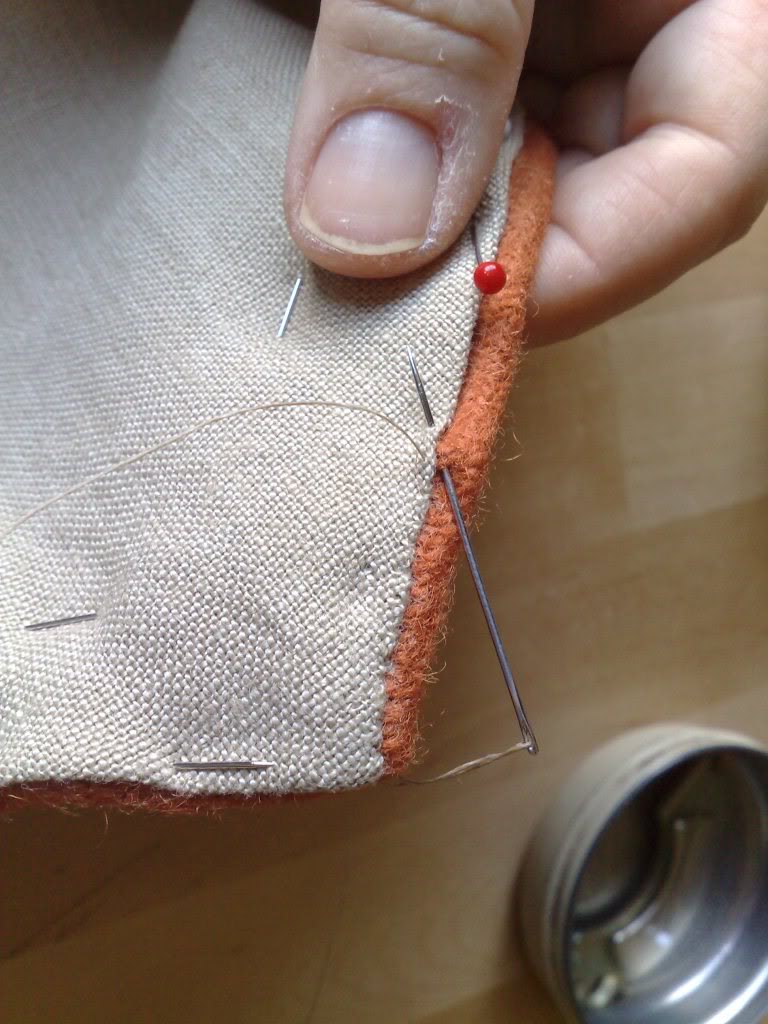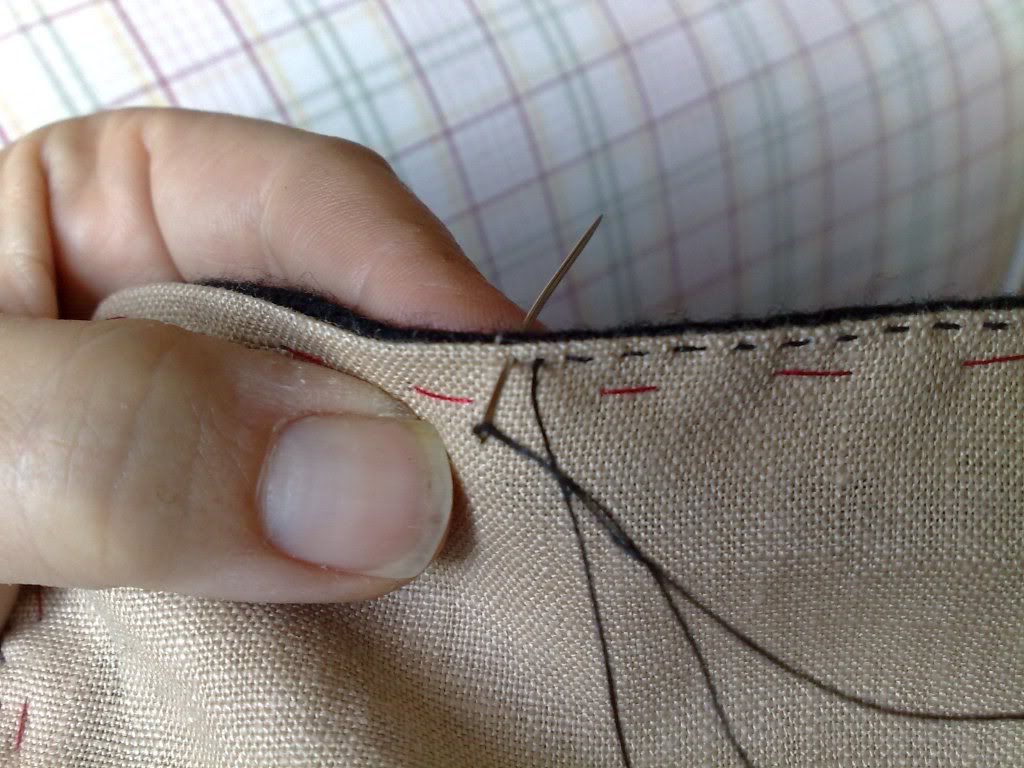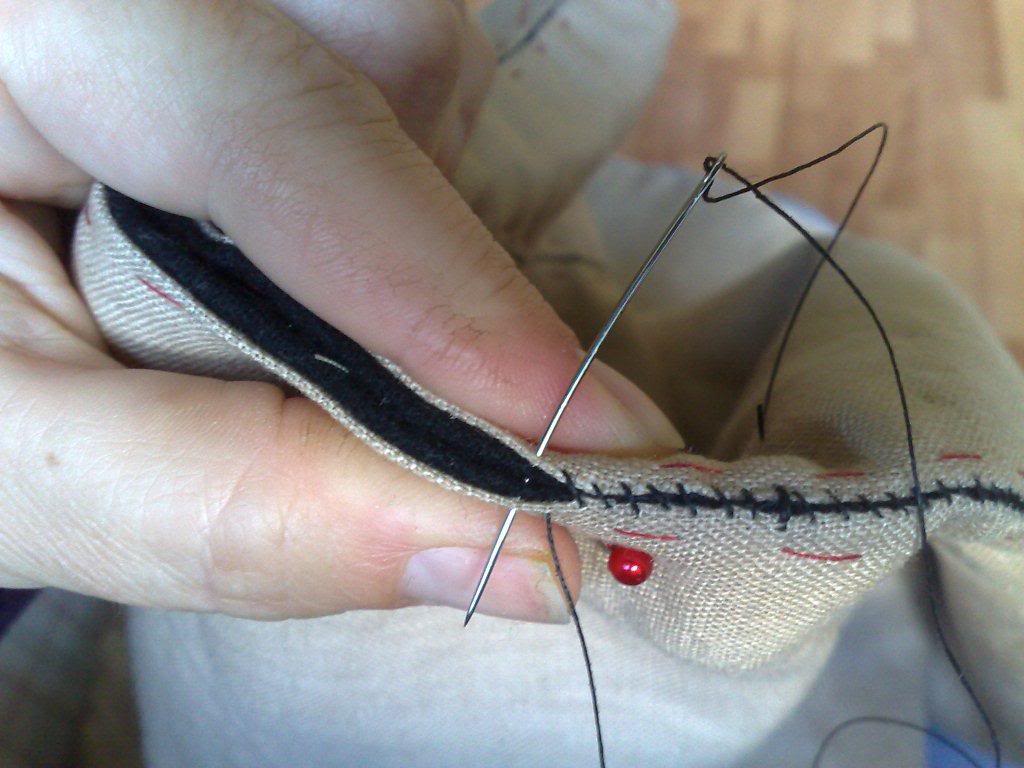I have some experience with sewing, but so far my goal was to make things that worked. Now i want to make as historically accurate things as possible. When I was sewing my padded arming doublet I made all pieces separately, wrapped all edges so no padding or cut edges was visible and then joined the pieces using "butt seam" so that they look same on inside as on outside. Result was very good. The seams are flat and therefore cause no discomfort. The only problem is that the stitching is clearly visible (see attached photo). Stitching thread may also be prone to wearing out but i haven't had this problem yet. But I am not sure that it is the right technique to use. Basically I can think of 3 different options:
- sew lining and outer layer pieces together to form 2 separate garments, insert one inside another and then sew together at wrists, collar and other edges
- sew each piece of outer layer with corresponding piece of lining leaving a small gap, turn inside out, close the gap and then join resulting 2-layered pieces together with same seam I used on my arming doublet
- do as described in the previous option but sew the pieces together with "normal" seam (so that seams are not flat but some material sticks to the inside). Can I use one of the above-described options, or is there a completely different proper way for doing it?
Thanks in advance for help.
